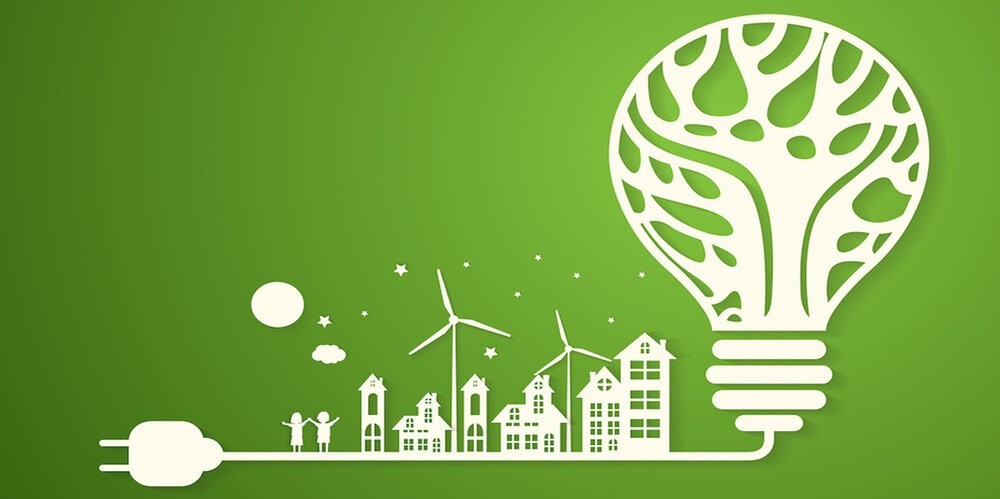Energy efficiency
Courtesy : www.energy star.gov
Simply put, energy efficiency means using less energy to get the same job done – and in the process, cutting energy bills and reducing pollution. Many products, homes, and buildings use more energy than they actually need, through inefficiencies and energy waste. Energy efficiency is one of the easiest ways to eliminate energy waste and lower energy costs. It is also one of the most cost-effective ways to combat climate change, clean the air we breathe, help families meet their budgets, and help businesses improve their bottom lines. Millions of American consumers and businesses choose or invest in energy-efficient products.
Examples of energy efficiency
Anywhere that energy is used, there is an opportunity to improve efficiency. Some products, like energy-efficient light bulbs, simply use less energy to produce the same amount of light. Other products don’t use energy directly, but they improve the overall efficiency and comfort of a house or a building (such as thermal insulation or windows).
- Light bulbs: An LED light bulb that has earned the ENERGY STAR label uses up to 90% less energy than an incandescent light bulb, while providing the same illumination.
- Windows: Energy-efficient windows are made with materials that reduce heat exchange and air leaks, which means you don’t need as much energy to heat or cool a space.
- Insulation: Adding more insulation to an attic keeps the warm air inside from escaping in the winter. In the summer, it keeps hot air out. With good insulation, you won’t need to use as much energy to keep your house warm in the winter or cool in the summer.
- Smart thermostats: Smart thermostats are Wi-Fi enabled devices that control heating and cooling in your home by learning your temperature preferences and schedule to automatically adjust to energy-saving temperatures when you are asleep or away. They can help you lower your energy bills by not spending money to heat or cool an empty house.
- Computer power management: Computers can be set to automatically enter a low-power “sleep” mode when not in use.
Energy efficiency protects the environment
Most light switches and outlets pull electricity from nearby power plants. These power plants typically burn fossil fuels, such as natural gas and coal. A byproduct of burning fossil fuels is the release of greenhouse gases, such as carbon dioxide, which contribute to climate change. More information on greenhouse gases.
These power plant emissions also contain other harmful air pollutants, such as nitrogen oxides, sulfur dioxide, and particulate matter, that lead to unhealthy air. Learn about common air pollutants.
Fossil fuels are also often burned directly to heat our buildings, such as in furnaces and boilers, and for water heating and cooking. This can impact indoor air quality in your home, as well as contribute to outdoor air pollution. By using energy more efficiently, we can help reduce emissions of greenhouse gases and other air pollution, fight the threat of climate change, and help to protect our health and the environment.
Energy efficiency saves money
By lowering energy use, energy efficiency reduces monthly energy bills and makes energy more affordable for businesses and families. Some energy-efficient products cost more to buy than other options, but they typically save you money over the long term. For example, an energy-efficient electric heat pump water heater could cost about $700 more than a standard electric water heater, but the energy savings typically add up to $3,500 over the life of the equipment. As you can see, the higher purchase price is more than offset by ongoing bill savings, reducing energy costs for consumers and businesses. To address this initial cost barrier, many utilities offer rebates and discounts ranging from $25 to $1000 off the cost of a heat pump water heater. Find information on rebates and other discounts.
Energy efficiency helps address energy equity
By reducing monthly energy bills, energy efficiency can lessen the strain of paying for energy, especially for families with high energy burdens – meaning a larger percentage of their income goes to paying energy bills than the average household. Installing energy-efficient products like light bulbs, windows, or efficient appliances can help to bring down a household’s energy burden, making energy more affordable. Families experiencing energy insecurity can face the difficult choice between paying monthly energy bills or putting food on the table. Energy efficiency can help households financially and improve the health, comfort, and safety of families in their homes.
ENERGY STAR can help you find energy-efficient products and homes
ENERGY STAR is the simple choice for energy efficiency, making it easy to find products that will save you money and protect the environment. The US Environmental Protection Agency (EPA) ensures that each product that earns the label is independently certified to deliver the efficiency performance and savings that consumers have come to expect. Find ENERGY STAR certified products.
ENERGY STAR certified homes are at least 10% more energy efficient than homes built to code and achieve a 20% improvement on average while providing homeowners with better quality, performance, and comfort. Search for ENERGY STAR certified homes.



